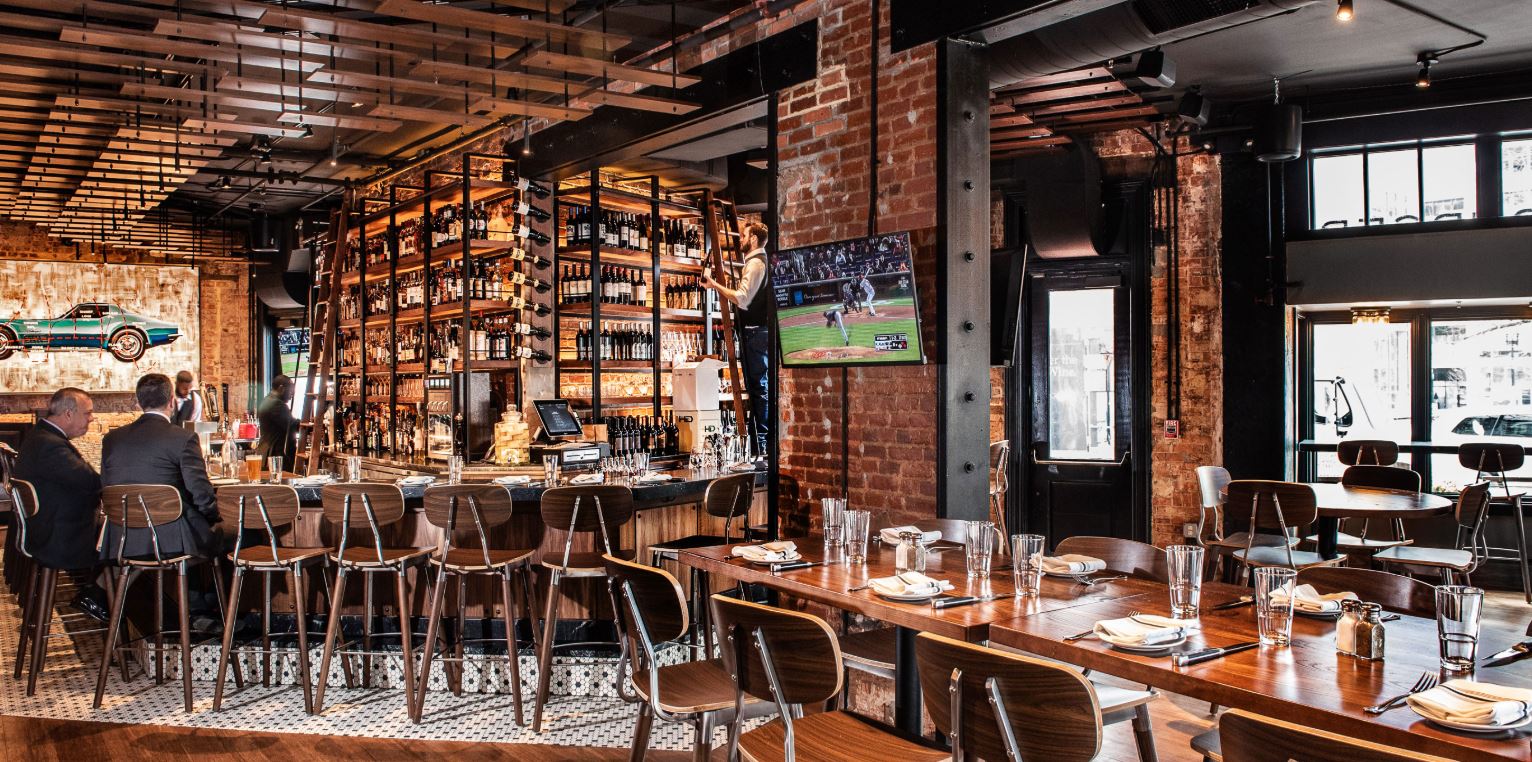Chinese Food Islamabad: Appreciate Authentic Chinese Food at its Best
Chinese Food Islamabad: Appreciate Authentic Chinese Food at its Best
Blog Article
Savor Authentic Eastern Cuisine With a Pan-Asian Twist for a Culinary Adventure
Getting started on a culinary trip with authentic Oriental cuisine, improved with a Pan-Asian twist, supplies a distinct possibility to check out the rich tapestry of tastes that specify the area's varied culinary traditions. As you consider these luring meals, consider the social narratives and historic influences that shape them, each bite providing a story waiting to be found. Fine dining experience Islamabad.

Exploring Pan-Asian Tastes
In the world of worldwide gastronomy, Pan-Asian food attracts attention for its impressive diversity and the unified interplay of flavors from different Oriental cultures. This culinary approach commemorates the rich practices and one-of-a-kind components located across the continent, producing a tapestry of preferences that is both fascinating and satisfying. Secret to Pan-Asian cuisine is its capacity to balance contrasting tastes-- wonderful, salted, spicy, and sour-- while highlighting the quality and top quality of each active ingredient.
From the umami-rich soy sauce of Japan to the fiery chili peppers of Thailand, Pan-Asian food supplies a substantial scheme of tastes. These components are often incorporated in innovative ways, boosting recipes with layers of complexity. As an example, using fragrant herbs such as lemongrass and cilantro, common in Vietnamese and Thai cuisine, includes a rejuvenating illumination to meals, while the consolidation of coconut milk delivers a velvety, rich texture.
The focus on fresh fruit and vegetables and aromatic flavors makes sure that each meal is not just a banquet for the taste however likewise for the senses. Pan-Asian food invites restaurants to embark on a culinary journey, discovering the huge and varied landscapes of Asian gastronomy with every bite.
Combination Dishes to Try
While Pan-Asian food is commemorated for its conventional tastes, the contemporary cooking landscape is increasingly welcoming combination dishes that blend these timeless elements with impacts from various other regions. This cutting-edge technique not just honors the rich heritage of Eastern cookeries but also introduces novel taste experiences that interest contemporary palates.
An archetype of such a blend recipe is the Korean-Mexican taco, where marinated bulgogi beef is covered in a cozy tortilla, topped with kimchi and a hot gochujang-infused salsa. This mix marries the vibrant, mouthwatering flavors of Korea with the dynamic, fresh elements of Mexican food. In a similar way, sushi burritos have actually gotten appeal, integrating the delicate virtuosity of Japanese sushi with the passionate, hand-held ease of a burrito, usually including blend components like tempura shrimp and avocado with a drizzle of wasabi mayo.
An additional notable dish is Thai curry ramen, which infuses the creamy, aromatic seasonings of Thai curry right into the soothing broth of standard Japanese ramen, developing a harmonious blend that tantalizes the detects. These combination recipes prolong beyond simple novelty; they represent a culinary discussion in between societies, urging exploration and development in the world of Pan-Asian cuisine.
Crucial Components and Seasonings
To genuinely appreciate Pan-Asian cuisine, one must understand the essential components and flavors that develop its structure. This diverse culinary design attracts from a rich tapestry of Asian traditions, using an unified mix of flavors and structures.
Fragrant elements are crucial, with garlic, lemongrass, and ginger being ubiquitous throughout various Pan-Asian recipes. These components give an aromatic base that improves the complexity of flavors. Flavors such as celebrity anise, cardamom, and cinnamon introduce warmth and character, resembling impacts from areas like China and India.

Food Preparation Techniques and Tips
Grasping the art of Pan-Asian food calls for knowledge with its unique cooking techniques, each adding to the dynamic tapestry of flavors this culinary practice is commemorated for. Central to these approaches is the stir-fry, a quick food preparation strategy that protects the dietary stability and dazzling colors of components. Using a wok, the stir-fry method permits even warm circulation, essential for accomplishing the characteristic texture and taste balance of Pan-Asian meals.
An additional essential technique is steaming, especially common see here now in Chinese food. This mild technique keeps the natural flavors and nutrients of active ingredients, making it suitable for seafood and vegetables. Dumplings, a beloved staple, typically profit from steaming, leading to soft, delicious textures.
Grilling, additionally integral, presents great smoky midsts to dishes such as Oriental bulgogi or Japanese yakitori (Instagrammable restaurants Islamabad). This method frequently involves seasoning active ingredients, enabling flavors to pass through deeply before food preparation over an open flame or warmer
Finally, mastering the art of balancing flavors-- sweet, sour, salty, bitter, and umami-- is important. Appropriately layering these components can raise a recipe from normal to extraordinary, supplying a complex and satisfying cooking experience that personifies the significance of Pan-Asian cuisine.
Dining Experiences Worldwide
Across the world, Pan-Asian cuisine uses an unequaled eating experience, commemorated for its abundant tapestry of tastes and vibrant presentations. This cooking sensation has transcended social limits, recording the hearts and tastes of food lovers worldwide. In multicultural cities like New York, London, and Sydney, Pan-Asian restaurants function as fusions where cooking practices from Thailand, Japan, China, and past assemble, supplying restaurants with a diverse mix of dishes that highlight the area's variety.
The international charm of Pan-Asian cuisine depends on its capacity to offer both authenticity and development. Chefs masterfully marry conventional ingredients such as lemongrass, soy sauce, and miso with modern strategies, causing meals that are both acquainted and refreshingly new. This blend permits restaurants to begin on a culinary trip that respects heritage while welcoming modernity.
Additionally, eating experiences are raised through attentively made environments that mirror the ethos of Pan-Asian looks. From minimal Japanese-inspired insides to lively Thai-themed rooms, each dining establishment offers a distinct atmosphere that matches the cooking offerings. Because of this, clients are not just taking in a dish however partaking in a cultural experience, making Pan-Asian dining a truly global phenomenon.
Conclusion
The exploration of Pan-Asian cuisine offers a profound understanding of the complex interplay of flavors and culinary customs throughout Asia. By accepting blend dishes such as Thai curry ramen and sushi burritos, the cooking trip not just here are the findings highlights the flexibility of conventional ingredients yet likewise showcases cutting-edge modern techniques. This gastronomic experience, enhanced by vital flavors and cooking methods, offers an unique chance to value the social variety and culinary virtuosity that specify Pan-Asian cuisine on a global range.
Embarking on a cooking trip through authentic Eastern food, boosted with a Pan-Asian spin, provides a special possibility to discover the rich tapestry of tastes that specify the area's varied cooking customs.In the realm of worldwide gastronomy, Pan-Asian cuisine stands out for its impressive variety and the unified interaction of tastes from numerous Eastern cultures. Key to Pan-Asian food is its ability to balance contrasting flavors-- pleasant, salty, spicy, and sour-- while highlighting the quality and quality of each ingredient.

Report this page